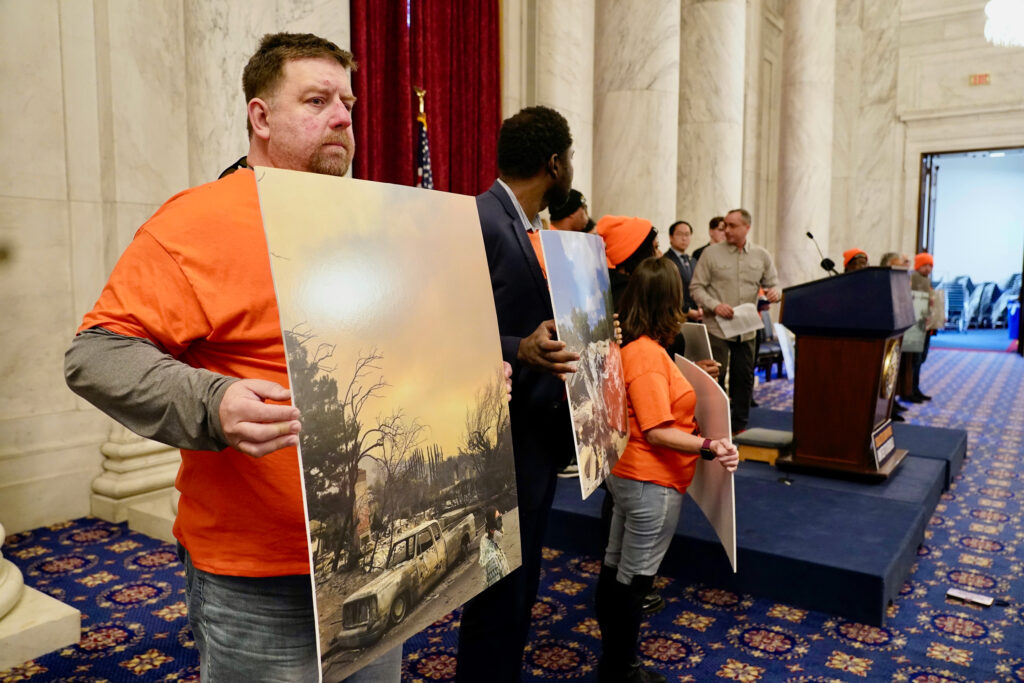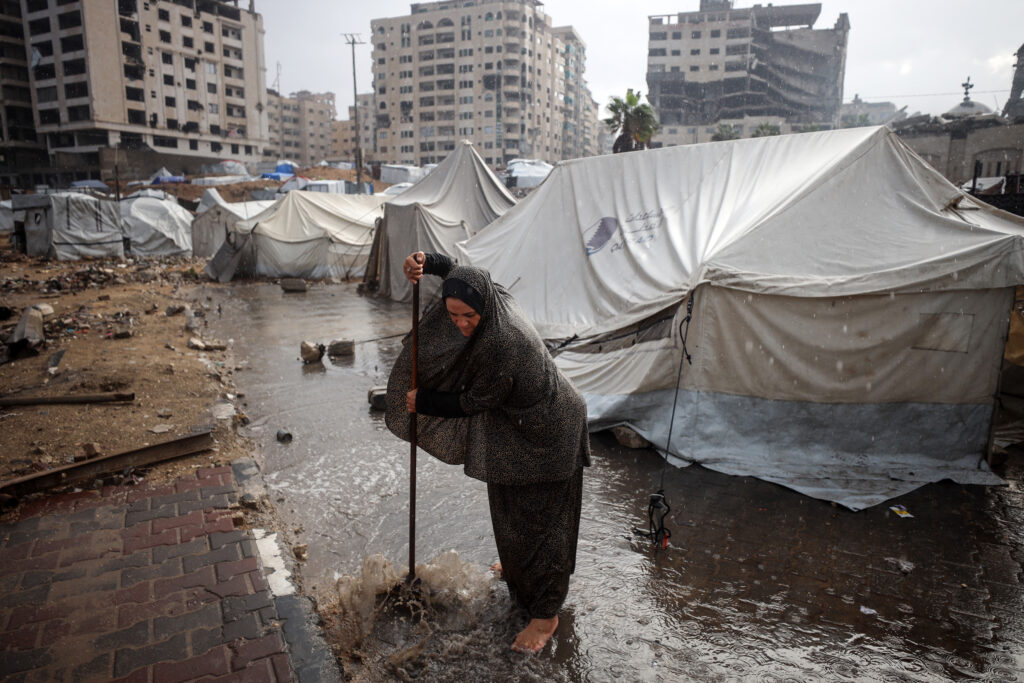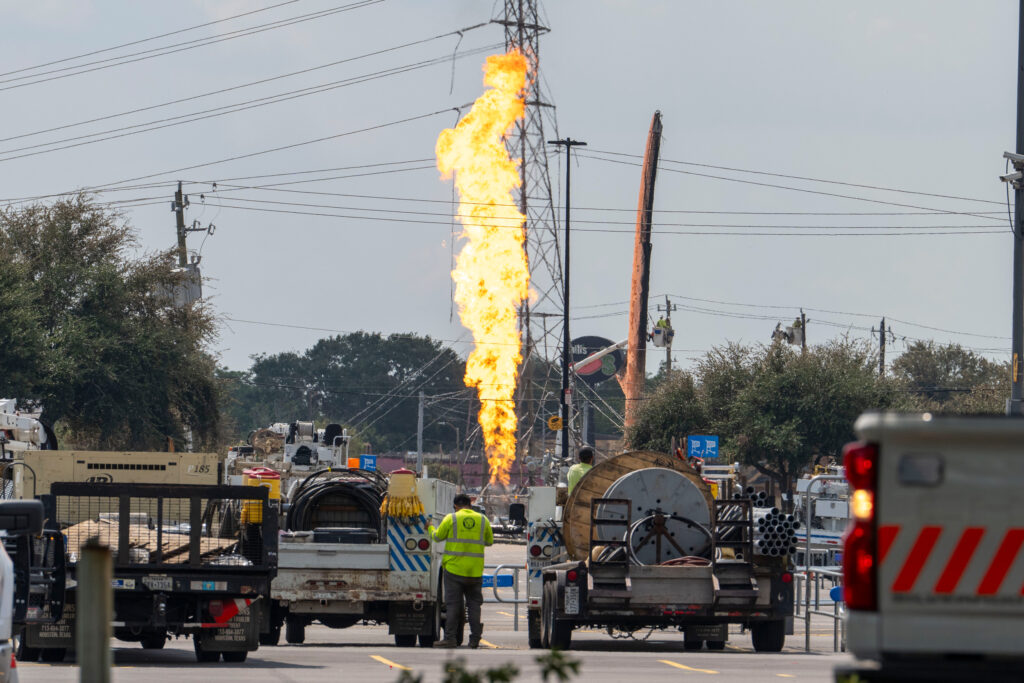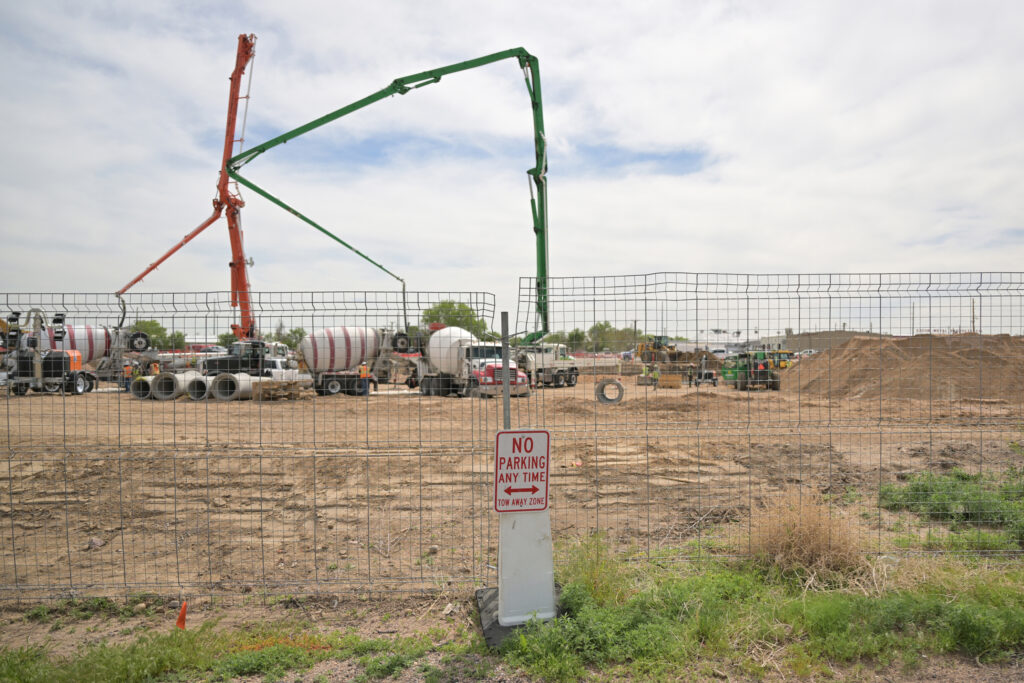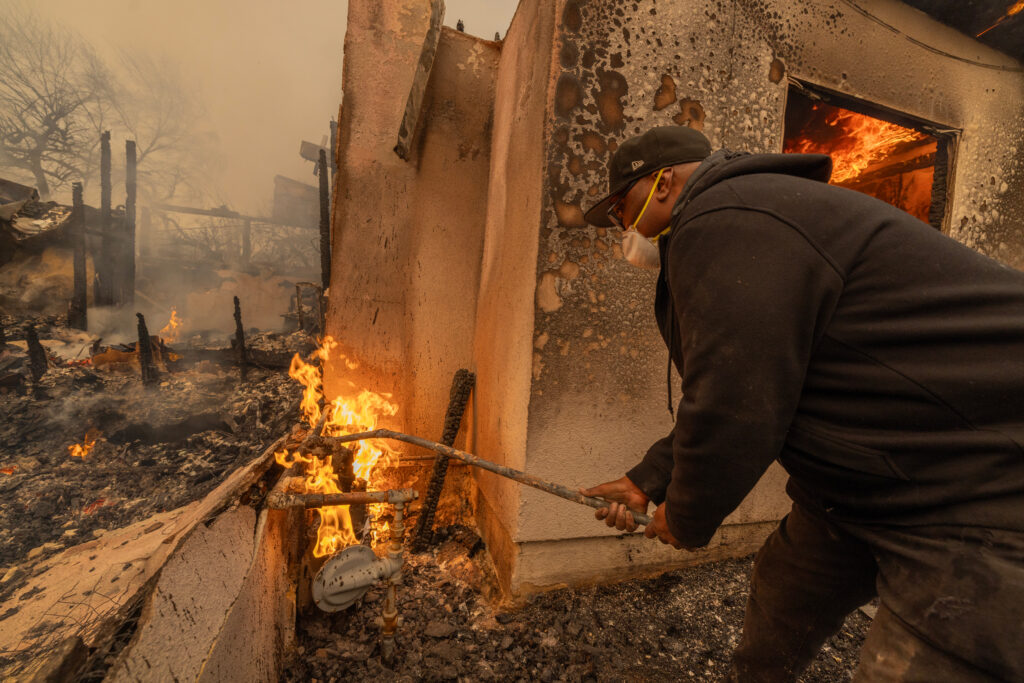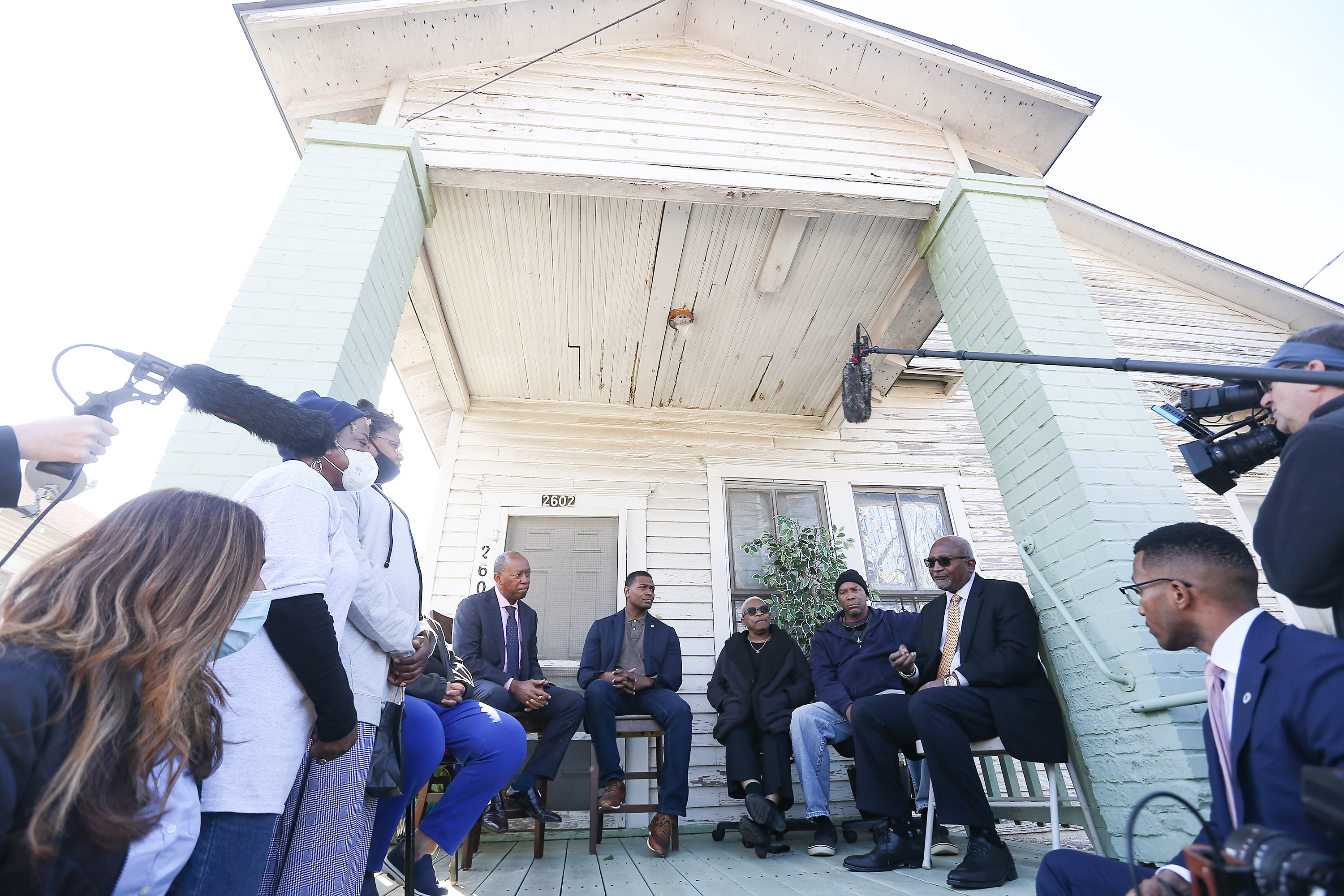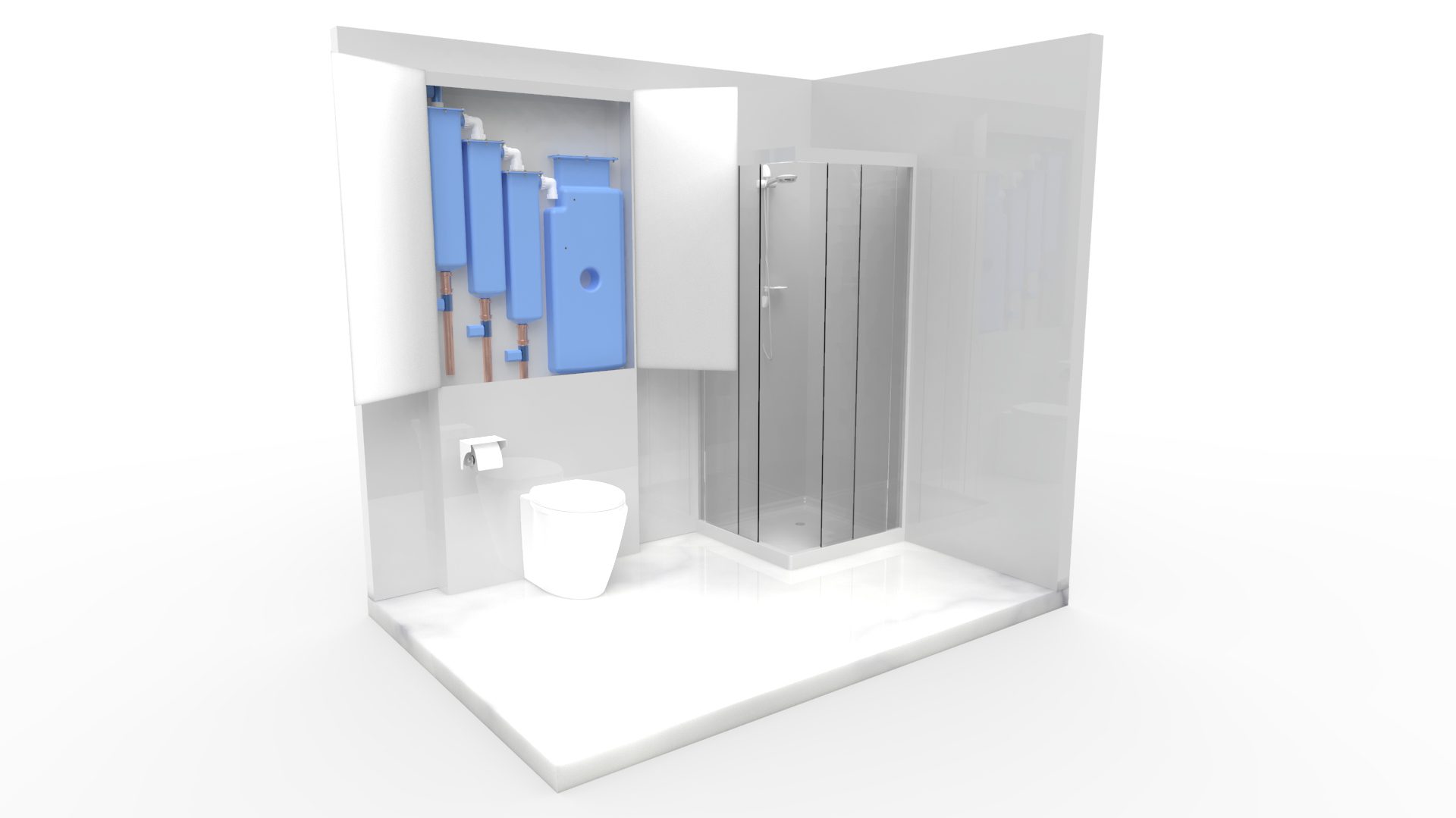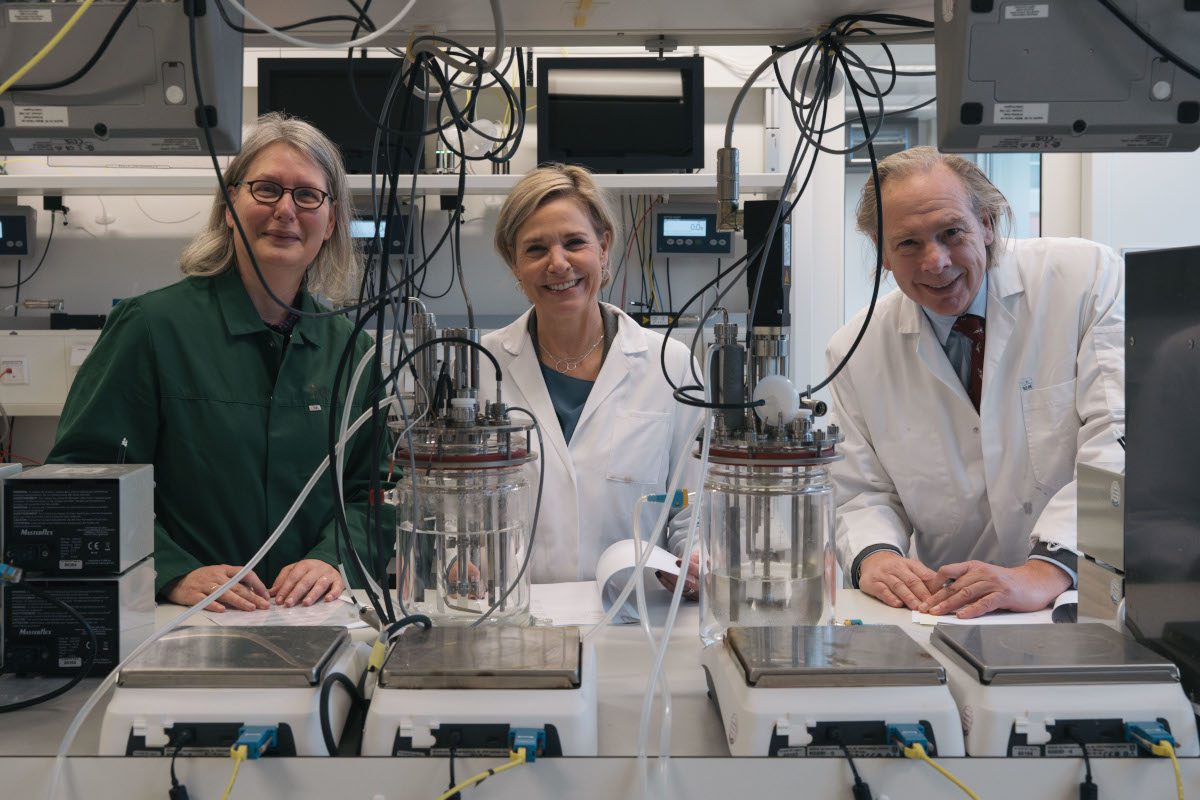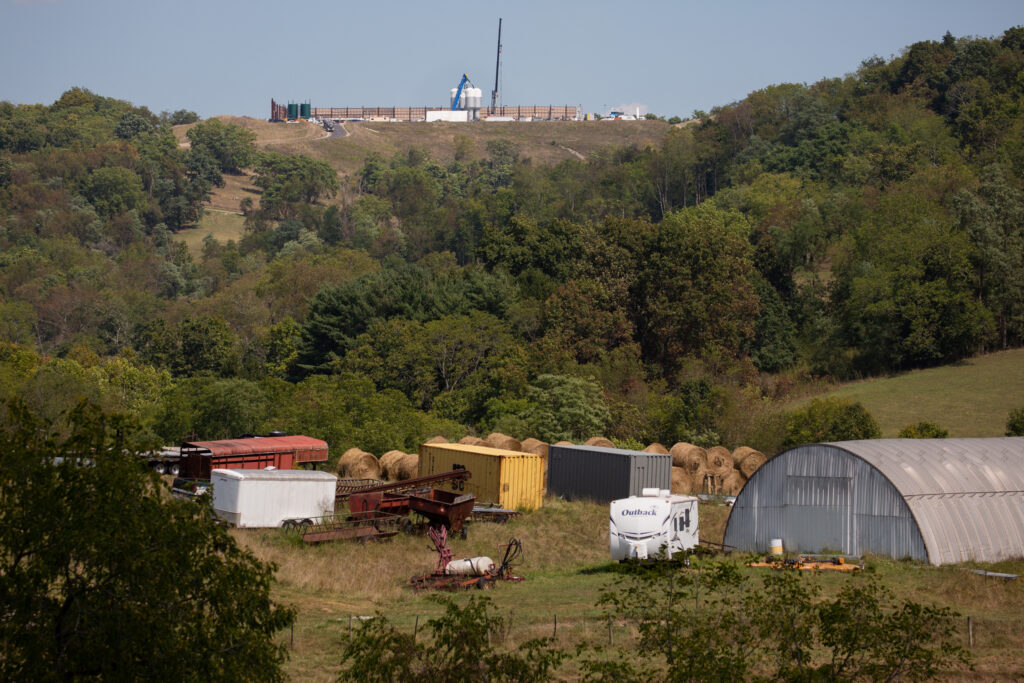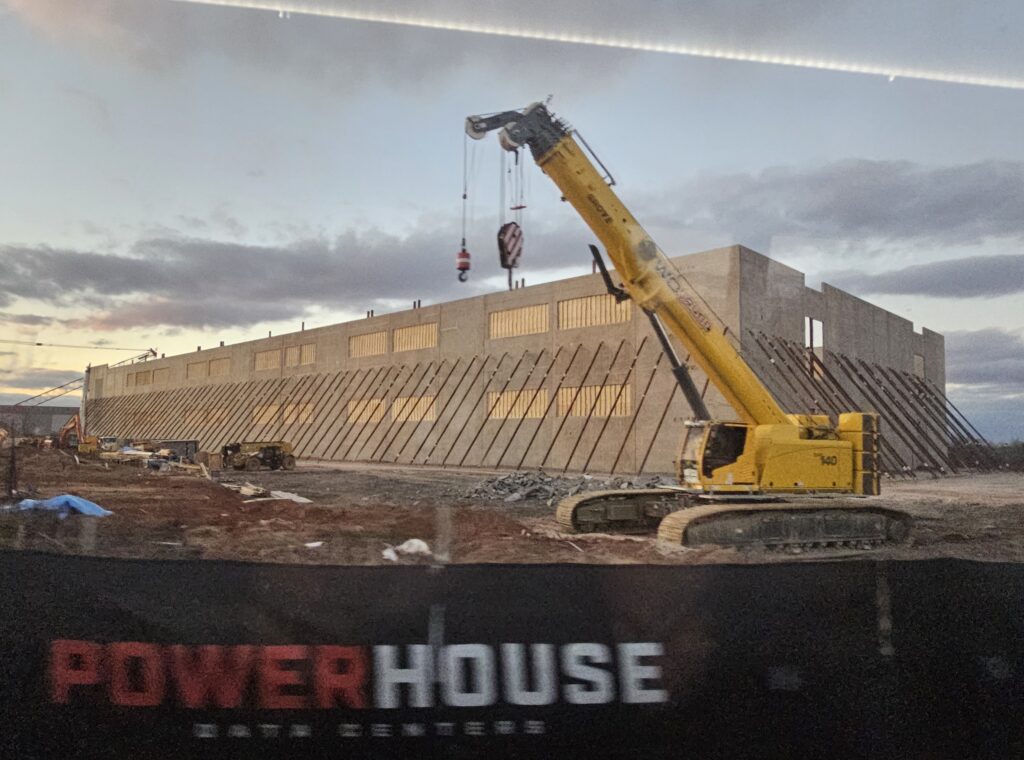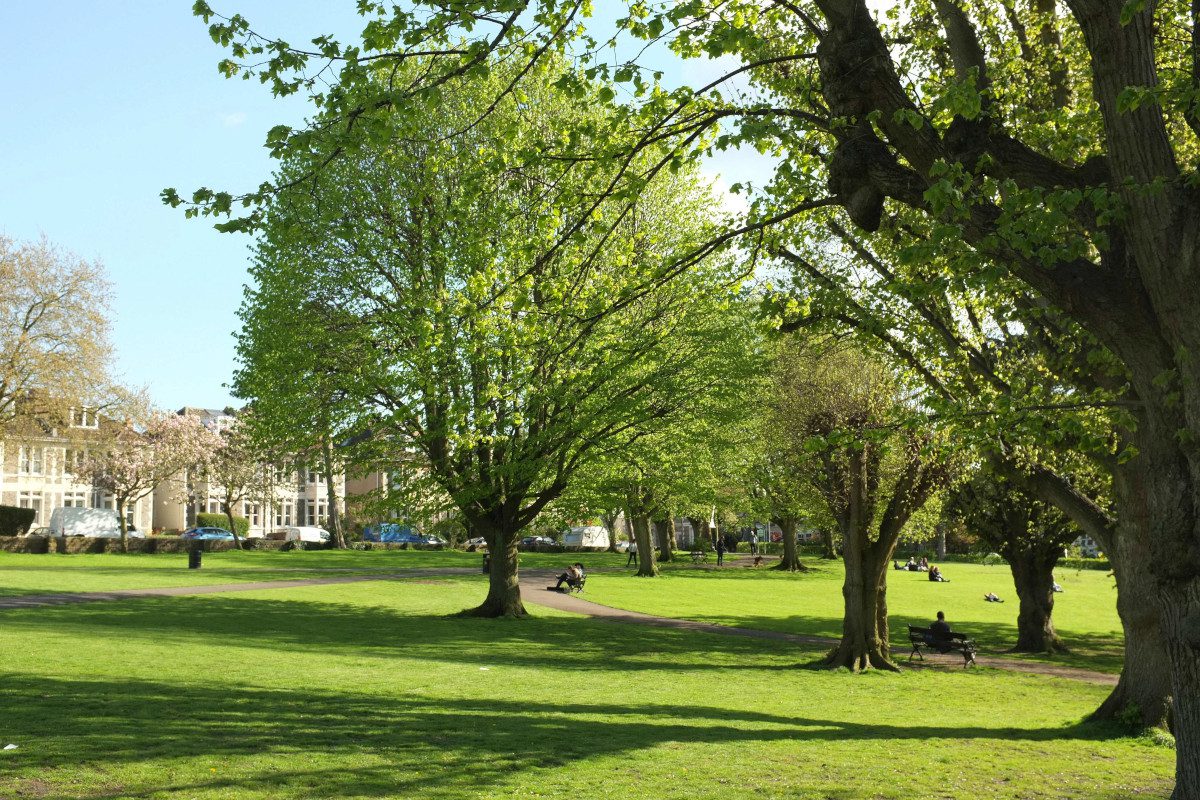The vast landscape east of Los Angeles known as the Inland Empire is among the fastest-growing regions in California, driven by a booming warehouse and logistics industry that keeps residents breathing some of the most polluted air in the nation.
Yet it wasn’t the constant stream of noxious fumes, idling engines and noisy trucks that first caught the attention of Andrea Vidaurre, a 29-year-old who just received the prestigious Goldman Environmental Prize for persuading California regulators to pass landmark truck and rail emissions standards. It was watching massive warehouses being built right next to homes, schools and parks, seeing homes bulldozed, and green spaces paved over. When she heard about families being harassed and bullied out of their homes—which is still happening today—she was outraged. So she got to work.
The first thing she did was figure out how these neighborhoods, where most residents are working-class and speak only Spanish, suddenly turned from residential into industrial zones without anyone knowing what was happening. As she started digging into zoning and planning documents, it didn’t take long for Vidaurre, who grew up in the San Bernardino Valley, to see the fingerprint of environmental racism.
We’re hiring!
Please take a look at the new openings in our newsroom.
See jobs
“It was very clear that as cities were being divided by the freeway, you were having certain people south of the freeway that were getting all the warehouses,” Vidaurre said. “It’s also where most of the Latino communities are at and the language-isolated communities are.”
Communities north of the San Bernardino Freeway, by contrast, are whiter and more affluent.
Similarly, the growth of the warehouse and logistics industry, and all the pollution it brings, has concentrated in the areas with more low-income communities and communities of color.
Roughly 600,000 diesel-powered trucks pass through the Inland Empire a day carrying goods from the ports of Los Angeles and Long Beach to more than 1 billion square feet of warehouses in San Bernardino and Riverside counties for distribution across the country. Thousands of trucks drive past homes, schools, daycares and parks, forcing people to keep their windows shut in one of California’s hottest regions or risk their health by venturing outside.
Diesel engines emit a complex cocktail of particle pollution and toxic gases, including nitrogen oxides and sulfur dioxide, that impair lung and heart function, leading to increased hospitalization rates for asthma and other respiratory diseases, heart attacks, cancer and early death. Heavy trucks and railways in the Inland Empire emit more than 14,000 tons of nitrogen oxides and 379 tons of fine particulate matter—PM2.5—a year, according to the Clean Air Task Force’s Death by Diesel tool, which costs more than $1.3 million in medical expenses and more than 8,400 lost work days.
San Bernardino and Riverside counties ranked first and second in the country, respectively, with the most unsafe days for ozone, a harmful compound formed when sunlight reacts with pollution, according to the American Lung Association’s latest State of the Air Report. Both received failing grades for air quality.
Even short-term exposure to ozone levels below national safety standards increases the risk of death, research shows.
Vidaurre has heard countless stories from people suffering health problems from the constant stream of industrial traffic. A man who lives by a freight freeway with his family had to have a double lung transplant yet never smoked a day in his life. After traffic picked up at a freight airport, one family had to start using a breathing machine to sleep. Many residents who live near a rail yard now struggle with cancer, though it never ran in their families.
“I hear about these health stories all the time,” said Vidaurre, who works as policy coordinator for the nonprofit People’s Collective for Environmental Justice, which she co-founded in 2020. “And I’ve learned that there is no safe level of diesel to breathe in.”
E-Commerce Spawns a Mega-Warehouse Boom
Developers built more than 150 million square feet of industrial space, primarily for warehouses, in the Inland Empire between 2010 and 2020, figures from real estate services company CBRE show. The boom continued as the pandemic-fueled explosion of e-commerce, particularly Amazon one-click shopping, led to the rise of mega-warehouses, with tenants signing leases at 37 warehouses with at least 1 million square feet in 2022. Seven of the largest leases, totaling 7.4 million square feet, were signed in the Inland Empire.
Hundreds of warehouses operate near public schools. Assemblymember Eloise Gómez Reyes, a Democrat who represents southwestern San Bernardino County, proposed a bill in 2022 requiring a 1,000-foot buffer between new logistics construction of 100,000 square feet or greater and neighborhoods and schools, to protect residents from harmful diesel pollution. The bill died earlier this year.
A record demand for warehouse and distribution facilities has forced thousands of people from their homes across the region at the same time California is going through a housing crisis, Vidaurre said. Many of the displaced families tended ranchos, tracts of land with goats and horses where they teach their kids to ride in the nearby hills. These Mexican customs are being erased as people are being displaced to make way for warehouses, Vidaurre said.
She’s seen hundreds of people moved from their homes in towns like Fontana and Bloomington, where most schools sit right next to warehouses, exposing children to diesel emissions linked to higher rates of asthma.

Vidaurre spent years working with communities as well as truckers and workers in the logistics industry—who typically make less than $20 an hour, well below the living wage—and learning the ins and outs of truck and rail emission regulations.
Discussions about new truck and rail emissions had to involve workers, she realized. Just as you can’t have a regulation about air quality without having the most impacted people in the room, she said, “you can’t have a regulation about trucks without having truckers in the room.”
Vidaurre worked to ensure that new rules wouldn’t hurt truckers and other logistics workers, many of whom live in the same communities impacted by the industry. So she joined forces with the Teamsters, which represents truckers and warehouse workers, along with unorganized workers and health care workers, who all helped craft the language of the regulations.
Ultimately, she helped organize a statewide coalition of environmental justice and labor organizations to push regulators with the California Air Resources Board, or CARB, to approve two landmark transportation regulations to limit truck and rail emissions.
The unartfully named In-Use Locomotive Regulation, which CARB estimates will yield more than $32 billion in health benefits by cutting nitrogen dioxide and diesel particulate matter, requires rail operators to pay into an emissions-based fund that will underwrite their transition to cleaner technologies. By 2030, trains must release zero emissions while operating in California.
The Advanced Clean Fleets Regulation directs the state to phase out diesel-burning trucks in lieu of zero-emission heavy-duty vehicles, requires specialized trucks used at seaports and rail yards to emit zero emissions by 2035 and requires manufacturers to sell only zero-emission trucks in California starting in 2036.
These historic regulations, which Vidaurre renamed the truck and train rule, reflect decades of work by environmental justice advocates and a Herculean effort by Vidaurre to harness her policy expertise to facilitate workshops, analyze technical documents and persuade CARB staff that it was possible to reconfigure the freight industry with public health, and justice, in mind. Vidaurre worked with community organizers to mobilize caravans from communities across the state to place ongoing pressure on state regulators to improve air quality in California. She invited CARB staff and legislators to visit the Inland Empire, listen to community members and see up close what it’s like to live in the middle of a freight-centered economy, breathing the dismal air that earns failing grades year after year. And she worked on a regulation to require warehouses in the region to install charging stations powered by solar panels over the next couple of years to head off concerns about the lack of charging infrastructure.
Vidaurre thinks it helped that California is now working toward a zero-emissions future. Plus, she added, it helped to remind CARB that they have a responsibility to protect communities from the harmful effects of air pollution and climate change. “It’s in their mission,” she said, with a smile.
As historic as the new truck and rail rules may be, Vidaurre wants policymakers to know the work has just started.
She and her colleagues are keeping an eye on how they are implemented, making sure workers in the logistics industry are taken care of.
And she’s excited about a White House announcement last Wednesday to support a zero-emissions freight network nationwide.
“That’s really important, because California proves that we can do it in a state that has so much of that industry,” she said. “But there are also key states that have big logistics networks that need to also do it.”
This story is funded by readers like you.
Our nonprofit newsroom provides award-winning climate coverage free of charge and advertising. We rely on donations from readers like you to keep going. Please donate now to support our work.
Donate Now
Looking ahead, Vidaurre wants to work on helping people recognize the role a consumer-based economy is playing in harming public health and the climate.
‘“We don’t think about how consumption and climate change are connected, because the goods movement system is so invisible,” she said. “We don’t think about how our products got to our shores, what it means when you click yes on Amazon, and you get a new package. We haven’t really been thinking about the fact that only in the last couple of years, we’ve normalized next-day shipping,”
Reducing consumption, she said, will in turn reduce the need for so many trucks and trains to move goods around. “We need to figure out how to use smaller batteries, less minerals, we need to be consuming less, we need a more efficient system, we need to be localizing more of our communities and our goods.”
In the end, she said, improving air quality is important, but not if it comes at the expense of creating a mineral mining problem in another community. “That’s not environmental justice.”
The Goldman Environmental Prize, awarded annually to six grassroots activists around the world doing work that makes significant changes in their communities, will be presented Monday at a ceremony in San Francisco.
Other winners include a professor from Spain whose innovative legal strategy helped protect Europe’s largest saltwater lagoon from environmental collapse; two Indigenous activists from South Africa who stopped destructive seismic testing for oil and gas off the coast of South Africa; an Indigenous activist from Australia who blocked the development of a coal mine that would have added 1.58 billion tons of CO2 to the atmosphere and threatened Indigenous rights and culture; a reporter from Brazil who coordinated an international investigation that directly linked beef sourcing to illegal deforestation in the Amazon rainforest; and a grassroots leader from India who led a community resistance campaign to protect 445,000 acres of forest from coal mine development.




